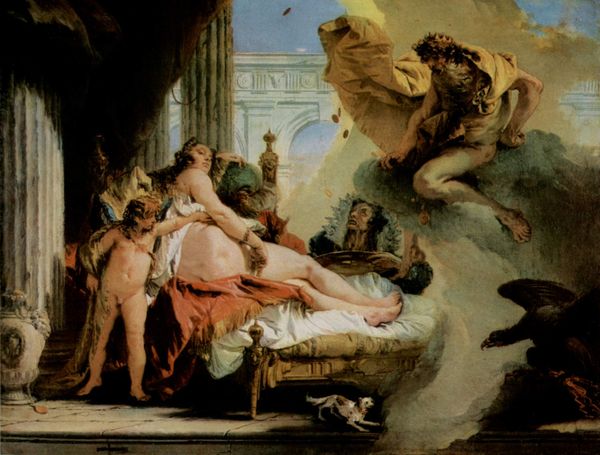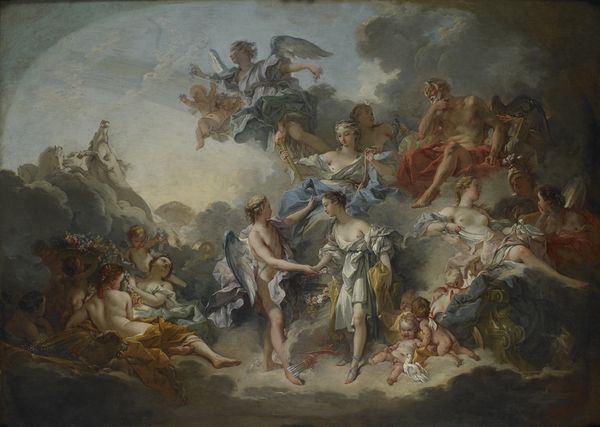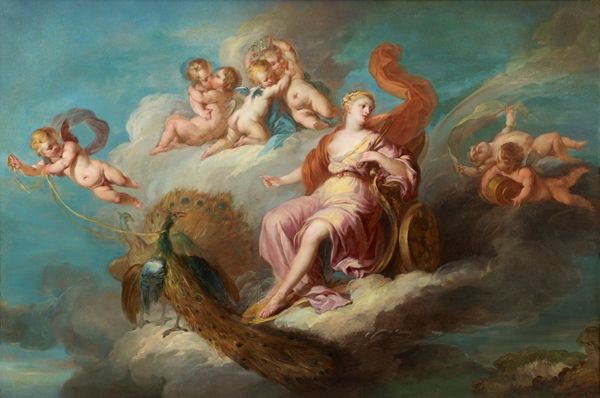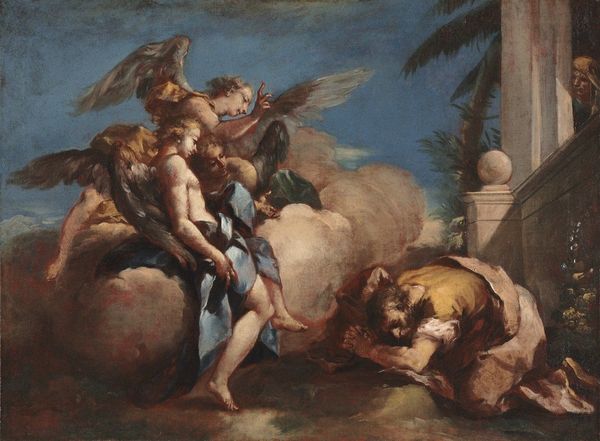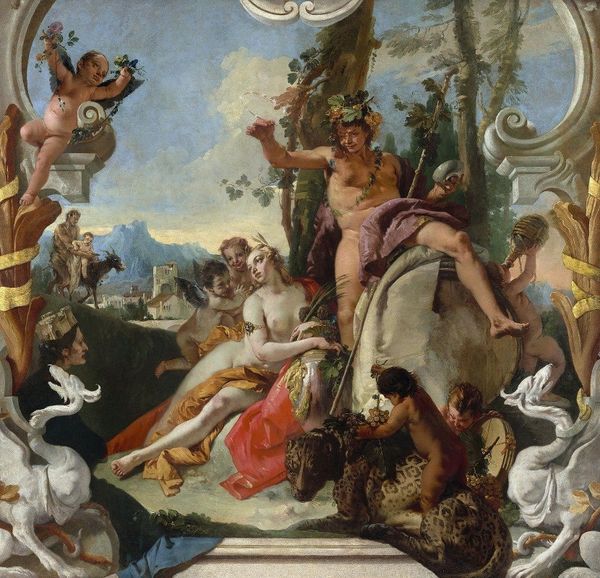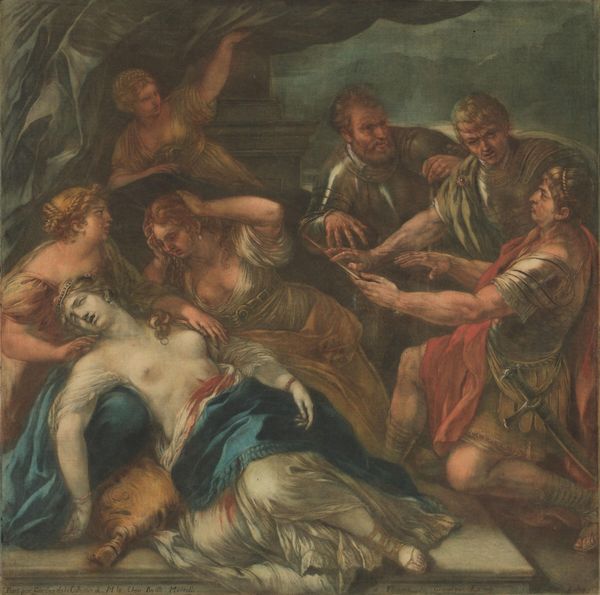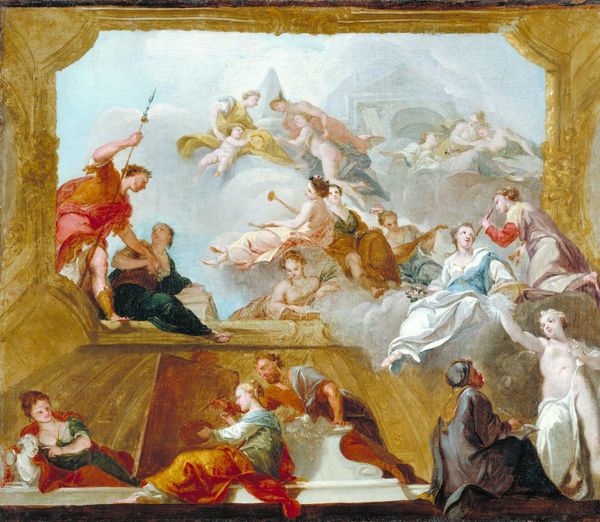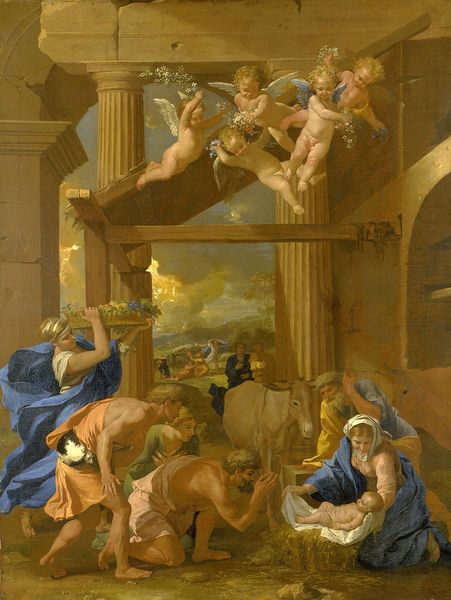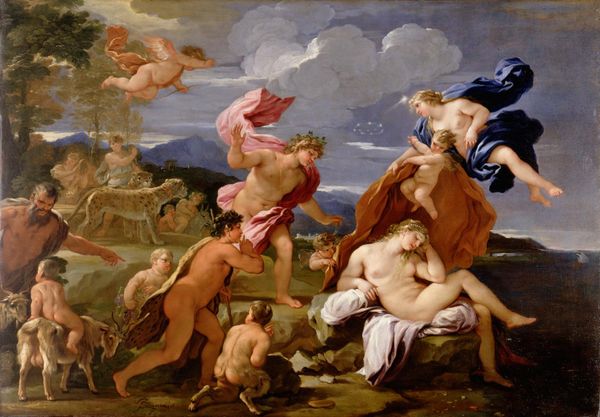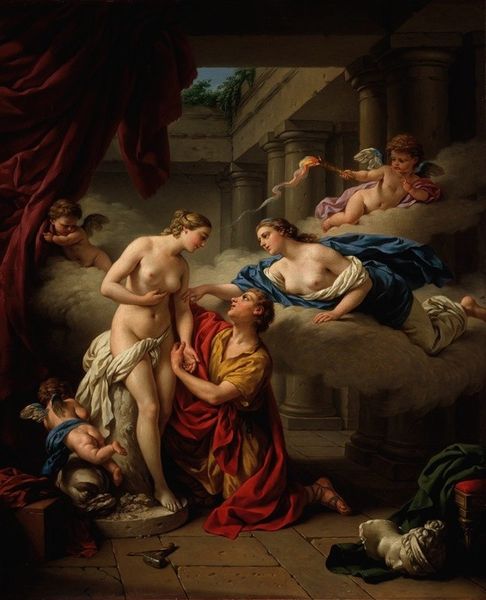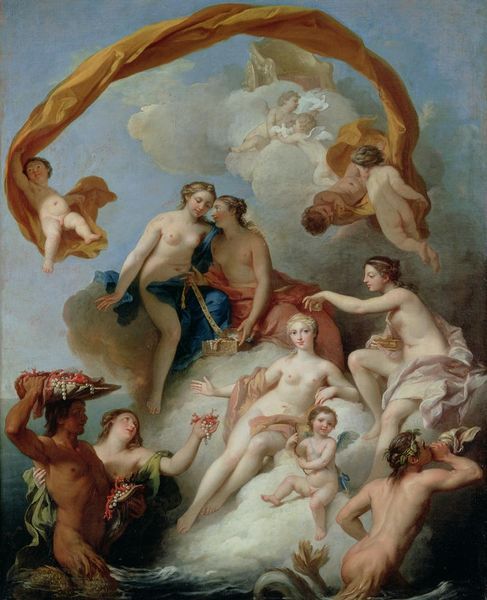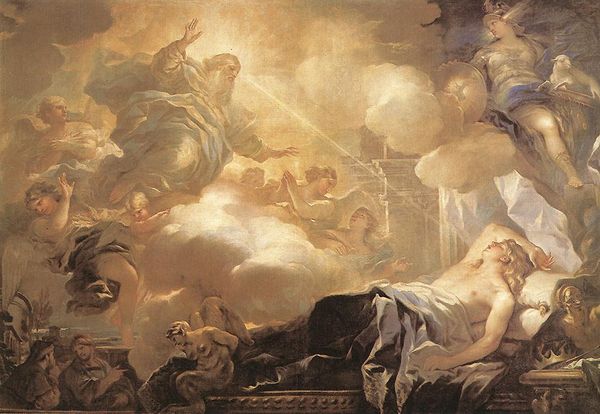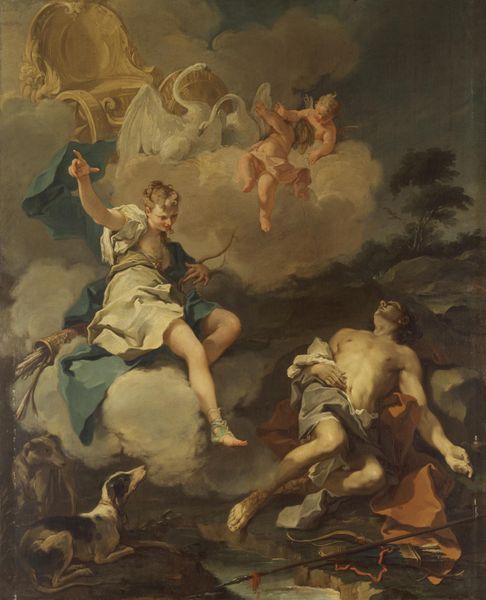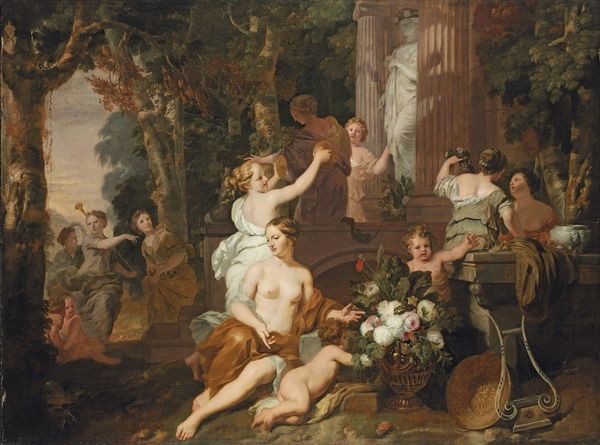
Religio begunstigt Abondantia ; Allegorische voorstelling van de verzorging van leprozen en onnozelen 1665 - 1685
0:00
0:00
oil-paint
#
portrait
#
gouache
#
allegory
#
baroque
#
oil-paint
#
figuration
#
mythology
#
painting painterly
#
history-painting
Copyright: Public Domain: Artvee
Curator: Gerard de Lairesse, a Dutch painter from the Golden Age, is the creator of this allegorical oil painting. He probably completed it sometime between 1665 and 1685, and it's called "Religio begunstigt Abondantia ; Allegorische voorstelling van de verzorging van leprozen en onnozelen" which translates to Religion Favors Abundance, Allegorical representation of the care of lepers and innocents. Editor: My first impression is of airy lightness, a stage set with clouds, broken architecture and cherubic figures, almost as if reality itself is crumbling under a divine dream. Curator: It’s very typical of its time, wouldn't you say? Note the cascading composition and use of allegory—the abundant fruit, the cherubs representing heavenly favor, the woman reclining as a symbol of Religion... Editor: The way she dominates the space certainly creates a distinct hierarchy. I find it interesting that she appears almost indifferent to the figures below. Does this speak to the Church's actual role at the time, perhaps? More a dispenser of abundance from a remove, rather than actively involved in care? Curator: Precisely. Look at the interplay of color; the cooler tones offset by the warmth of her robes create depth, which draws the eye toward that gesture towards those offering what appears to be floral tribute. It suggests the church is bestowing care from on high. Editor: And I can't help but consider the figures represented in the foreground, whom are understood through its original title to be "lepers and innocents," are partially cropped out. What does that say about their societal status versus the Church looking down? Curator: This compositional choice emphasizes a divine detachment. It highlights the social distance, reflecting a baroque conception of hierarchy. Editor: What I appreciate is the de Lairesse used these classical techniques to critique that hierarchy in subtle ways through his representation. It prompts us to examine the social responsibilities embedded within these allegorical representations. Curator: Agreed. He employs the era’s visual language, yet imbues it with a silent questioning. Editor: Ultimately, seeing this piece reminds us that artworks of this period were engaged in broader social dialogues.
Comments
No comments
Be the first to comment and join the conversation on the ultimate creative platform.
